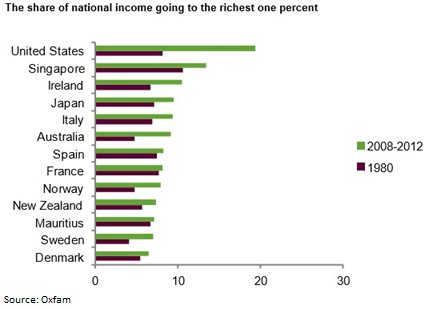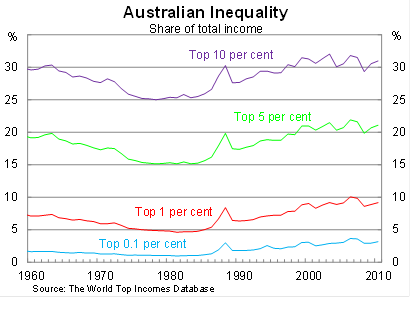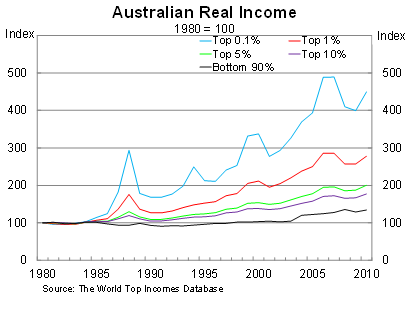Australia's inequality shame can no longer be ignored
Eighty-five individuals have as much wealth as the poorest 3.5 billion people.
That’s not even the richest 1 per cent of people – just 85 people – the richest 1 per cent has 65 times the wealth of the poorest half of the world.
Oxfam’s recent paper, Working for the few, paints a remarkable and depressing narrative. It is a story characterised by a rising ‘elite’ society with the financial clout to dominate and capture government decision making, often to the detriment of everyone else.
Unfortunately we are not simply talking about Wall Street or members of the Russian oligarchy. Australia is no exception – in fact we are worse than most.
From the outset it must be acknowledged that some economic inequality is necessary. Society still needs to reward those with specialised skills and talent and reward entrepreneurialism, hard work and risk-taking. But a high level of inequality curbs economic growth and promotes poverty, creates crime and terrorism, and erodes the very foundation of democracy.
There is a balance to be had between inequality and opportunity and we have failed to get that balance right.
As the graph below shows, the share of national income accruing to the top 1 per cent of income earners has increased significantly over the past three decades. It might not be immediately obvious but of the countries listed below, Australia had the second highest increase in inequality.

The top 1 per cent of income earners account for almost 10 per cent of Australia’s annual income. In addition, the biggest gains in income share have been concentrated in the top 1 and top 0.1 per cent of income earners. Remember that for the income share of any of these groups to go up another group has to go down, in this case the bottom 90 per cent of income earners.

The actual level of income growth over the past thirty years is quite extraordinary and really reinforces how well the ‘elite’ have done compared with the working class. Real income for the bottom 90 per cent of the income distribution rose by just 34 per cent between 1980 and 2010. By comparison, the top 1 per cent has enjoyed income growth of around 178 per cent.

Part of the reason for this has been globalisation and trade liberalisation, which has opened our markets to a range of low-cost alternatives and reduced the bargaining power of low income employees. Technological change has benefited those most able to take advantage of that technology, putting a premium on high-skilled employees.
We shouldn’t underestimate how disruptive globalisation has been to a number of Australian industries and even if the economy as a whole has benefited – the economic pie is undeniably bigger – pockets of the population, typically those holding blue collar jobs, have become worse off.
But a more important driver of inequality is the increasing role played by wealth in the political process. The ability to lobby government is an ability reserved predominantly for the wealthy and that ability is of great value.
As Oxfam says, increasing inequality leads to unequal political representation. Our democracy is founded on the notion of ‘one person, one vote’ and yet a vast majority of people have votes that don’t matter, while a small minority have votes that matter a great deal.
Inequality was once at the very centre of Australian politics – it was the fundamental dividing line between the Labor and Liberal parties. We still see ‘class warfare’ rhetoric on occasions, but at a time when it should be front and centre, it has taken a back seat to personality politics, boat people and imaginary debt crises.
The Australian economy has enjoyed an unprecedented period of economic prosperity that provided ample opportunities to address poverty and inequality and improve opportunities for the poor. The real kicker is the economy would have gotten a welcome boost if these issues had been addressed. Instead, successive governments have failed to meet our infrastructure needs, failed to plan for the future and failed their social obligations.
A central aim of government should be to provide equality of opportunity (as opposed to equality of outcome) to as many people as possible. Everyone should have the opportunity to make the most of their abilities and talent regardless of whether they were lucky enough to be born to wealthy parents. As a society we must recognise that upward mobility is difficult without a little bit of help along the way.















